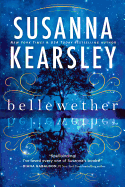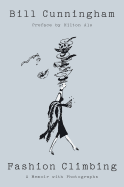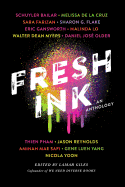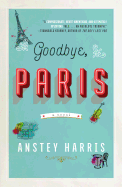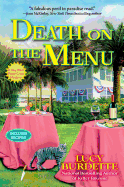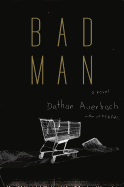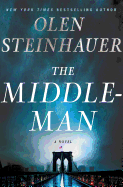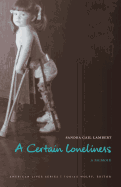Friday, September 7, 2018
During a lecture at Bennington College in 2002, I heard poet and translator Alastair Reid say this: "There is no possible theory of translation. It's alchemy.... You are being spoken by the language."
 Lately I've been spoken by the language of several books, including This Little Art by Kate Briggs (Fitzcarraldo), a dazzling alchemical exploration of her world between words, in which she notes that "when it comes to writing and reading translations the question of what is wholly normal or truly plausible, of what was really said or written, gets suspended slightly."
Lately I've been spoken by the language of several books, including This Little Art by Kate Briggs (Fitzcarraldo), a dazzling alchemical exploration of her world between words, in which she notes that "when it comes to writing and reading translations the question of what is wholly normal or truly plausible, of what was really said or written, gets suspended slightly."
 "Language is powerful, almost magic, and the smallest alteration can elevate a sentence or be its undoing," the narrator observes in Mirror, Shoulder, Signal by Dorthe Nors, translated by Misha Hoekstra (Graywolf). Sonja, a Danish translator of crime novels by a bestselling Swedish author, is learning to drive in middle age. Words are complicated in the best possible way.
"Language is powerful, almost magic, and the smallest alteration can elevate a sentence or be its undoing," the narrator observes in Mirror, Shoulder, Signal by Dorthe Nors, translated by Misha Hoekstra (Graywolf). Sonja, a Danish translator of crime novels by a bestselling Swedish author, is learning to drive in middle age. Words are complicated in the best possible way.
Language alchemy also surfaces in Meredith Broussard's illuminating book Artificial Unintelligence: How Computers Misunderstand the World (MIT Press). She writes that "voice-response interfaces" (e.g., Alexa, Siri) "don't understand language. They simply launch computerized sequences in response to sonic sequences, which humans call verbal commands."
 Then there's Stephen Greenblatt, whose not-so-thinly disguised, highly engaging polemic Tyrant: Shakespeare on Politics (Norton) reminds us that in the Bard's time, there was no freedom of expression, "on stage or anywhere else," so "people developed techniques for speaking in code, addressing at one or more removes what mattered most to them."
Then there's Stephen Greenblatt, whose not-so-thinly disguised, highly engaging polemic Tyrant: Shakespeare on Politics (Norton) reminds us that in the Bard's time, there was no freedom of expression, "on stage or anywhere else," so "people developed techniques for speaking in code, addressing at one or more removes what mattered most to them."
And what happens when words fail? Tim Winton's brilliant novel The Shepherd's Hut (FSG) probes the mind of Jaxie Clackton, a troubled young man looking for a way out. ("Mum said school mighta been different for me if I only give a damn. Maybe it was wasted on me like the teachers said. I didn't have any philosophy in me then, so I didn't know what to listen for.") On the run, in the outback, he finds his language.
One way or another, if we're lucky, we all get spoken by the language. --Robert Gray, contributing editor
Bellewether
by Susanna Kearsley
Discover: In this fascinating novel, a modern museum curator tries to unravel the legend of a woman who lived during the French and Indian War.
Baby, You're Gonna Be Mine
by Kevin Wilson
Discover: This is an odd and charming story collection about adulthood and childhood from the author of The Family Fang.
Goodbye, Paris
by Anstey Harris
Discover: When her lover is involved in an incident that receives media attention, a violin maker finds her life disrupted.
So Much Life Left Over
by Louis de Bernières
Discover: The tides of war affect the domestic lives and romantic entanglements of a group of long-time British neighbors and relatives.
The Piranhas: The Boy Bosses of Naples
by Roberto Saviano, transl. by Antony Shugaar
Discover: In a fictionalization of real events, a 15-year-old starts a gang of teenage boys that terrorizes Naples.
Mystery & Thriller
Death on the Menu
by Lucy Burdette
Discover: Lucy Burdette's eighth Key West food critic mystery is a quirky, delicious mix of flan, international diplomacy, mojitos and murder.
Bad Man
by Dathan Auerbach
Discover: In the aftermath of his toddler brother's disappearance, a young man is forced to take a job at the store from which he vanished.
The Middleman
by Olen Steinhauer
Discover: As a new revolution emerges in the U.S., will the FBI be able to stop the group behind it before they change all the rules of the game?
Biography & Memoir
Fashion Climbing: A Memoir with Photographs
by Bill Cunningham
Discover: The influential photographer Bill Cunningham tells vivid stories of his fashion world life in this charming, opinionated posthumous memoir.
A Certain Loneliness
by Sandra Gail Lambert
Discover: Sandra Gail Lambert's essays offer a blunt, often bemused look at a life spent managing a physical disability.
Children's & Young Adult
Fresh Ink
by Lamar Giles, editor
Discover: Thirteen authors infuse fresh ink into the world of YA literature with a collection of stories that highlight the power and beauty of diversity.
Mirage
by Somaiya Daud
Discover: Somaiya Daud's fantasy/sci-fi debut, Mirage, depicts 18-year-old Amani's enslavement as body double to the princess of her homeland's occupiers.
A Long Line of Cakes
by Deborah Wiles
Discover: To protect her heart, Emma Alabama Lane Cake, the daughter of an itinerant baker, decides she isn't going to make any friends in their new home--but fate has other plans.
| Advertisement Meet belle bear! |


